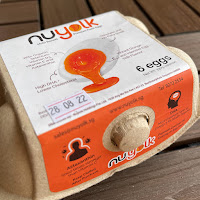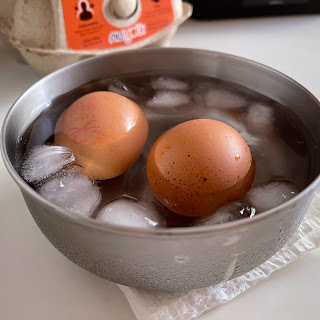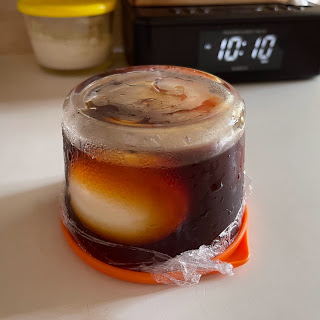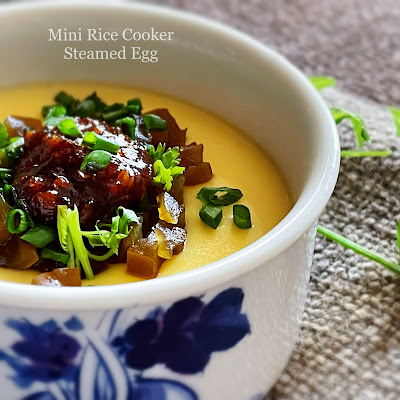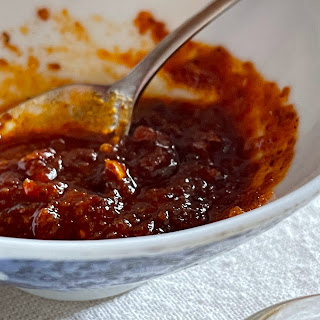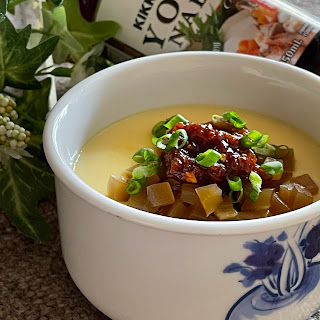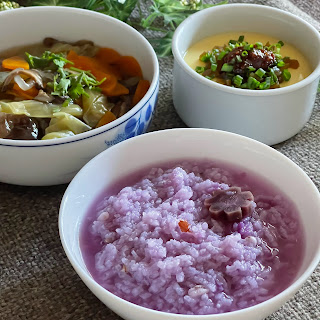Not a perfect Ajitama tamago with gel-like yolk, but this is just my first step to cooking the Japanese seasoned soft-boiled egg using steaming method. Half-cooked yolk is better than raw yolk, hehe 😆 My purpose of steaming the eggs instead of boiling them in a big pot of water was to save water and precious energy. Using just 40ml of water is more energy efficient than boiling a big pot of water for just 2 eggs 😃
I first tried to prepare the seasoned soft-boiled egg using the more nutritious NuYolk egg. However, my first few early attempts failed with the egg white sticking to the membrane and the shell. Later, after searching for solutions, then realized the protective coconut oil coating could be the main cause of the failure. I cleansed away the coconut oil coating and kept the eggs at room temperature for 24 hours before cooking them. Amazingly, the problem was solved 😄
Ingredients
2 eggs, about 55g each, poke a hole at the broader end of the eggs.
Marinade
50g hot water
15g yosenabe sauce/soy sauce *
3g low-sodium salt
4g raw sugar
1g dark soya sauce for colour
70g ice cubes
* Yosenabe sauce saved the trouble of having to boil soya sauce in mirin and dashi broth.
Directions
1. Rinse eggs, and place in two small metal cups lined with wet tissues.
If you’re using “nu yolk” eggs, you need to clean away the coat of protective coconut oil on the shell, and let the egg rest for 24 hours before steaming. This helps to reduce the difficulty in peeling the egg shell later.
3. Pour 40ml of water into the inner pot of a mini rice cooker. .
Start a 10-minute countdown timer at the same time.
When the timer rings, switch to “Keep Warm” for 1 minute.
5. While waiting to peel the eggs, dissolve all the marinating ingredients, except the ice cubes, in a small cup big enough to hold two eggs.
Add the ice cubes after all the sugar has dissolved.
7. Cut the eggs and serve in ramen 🍜

